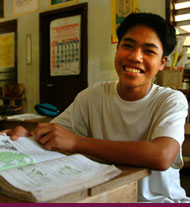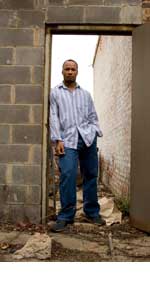
 |
|
|

|
Targeting Human NeedsDisasters
|
|
Compassion Spotlight
|
|
The Need
The Response
Other Federal Efforts
Disaster preparation, response, and recovery are most effective when they involve a cross-sector collaboration of Federal, State and local government, corporations, foundations, and FBCOs. FBCOs are often uniquely able to engage in disaster response in ways that complement the role of Federal, State, and local government agencies, including volunteer mobilization and local infrastructure. As response transitions to long-term recovery, the volunteer and community organizing, fund-raising, and other operations can play a crucial role in community revitalization.
 |
The FBCI’s newest Center is located within the Department of Homeland Security to ensure that FBCOs are recognized and utilized as indispensable allies in disaster preparedness, response, and recovery. The Center supports and complements a range of Federal efforts designed to advance this goal.
The National Response Framework
The National Response Framework (NRF), the national guide for domestic disaster response, is a collaboration of the Department of Homeland Security, USA Freedom Corps, the Federal Emergency Management Administration (FEMA) and other public- and private-sector actors. The NRF has been revised to more effectively utilize and coordinate with FBCOs and their skilled volunteers. Following the NRF lead, States are increasingly partnering with FBCOs as key allies in disaster preparation, response, and recovery efforts.
Citizen Corps
President Bush created Citizen Corps in 2002 to facilitate locally led collaboration between government, businesses, FBCOs, and other key actors to help communities build multisector disaster response. Since the launch of the initiative, nearly $150 million has been distributed to States and territories to build community preparedness. Citizen Corps currently operates 2,339 local Councils, which serve nearly 224 million people, or 78% of the total U.S. population. There are also 55 State/Territory Citizen Corps Councils.
The Corporation for National and Community Service
The Corporation for National and Community Service (CNCS) helps mobilize national service members and community volunteers to prepare for and respond to disasters. Since Hurricane Katrina in 2005, more than 93,000 participants in CNCS programs have given more than 3.5 million hours of service, managed 262,000 volunteers, and provided more than $130 million to volunteer-centered response and recovery efforts in the Gulf Coast region.
In addition, CNCS has expanded its strategic focus to include disaster preparedness and response as one of its five high-priority issue areas. Recognizing that volunteers are critical to disaster preparedness, response, and recovery, CNCS trained State CNCS commission directors to more fully integrate volunteers and nonprofit organizations into State and local disaster preparedness efforts.
USA Freedom Corps Volunteer Network
The USA Freedom Corps Volunteer Network, the Nation’s largest clearinghouse of service opportunities, connects volunteers with FBCOs to serve in disaster response. From the 6 months prior to Hurricane Katrina to the 6 months immediately after, the number of volunteer searches performed on the Web site increased 3,000 per day, from over 100,000 to more than 550,000.